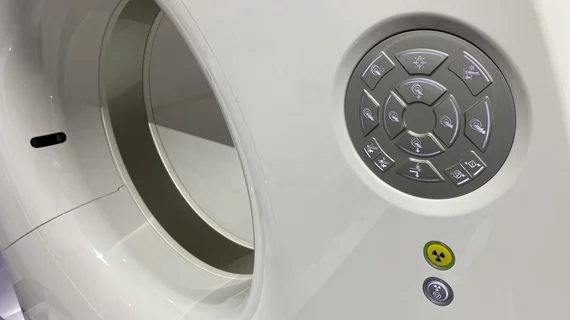Medicare drops AUC requirement for advanced imaging, ASNC celebrates
For almost nine years since the adoption of the Protecting Access to Medicare Act (PAMA) established the requirement for appropriate use criteria (AUC) to receive payment for advanced diagnostic imaging, the American Society of Nuclear Cardiology (ASNC) has been lobbying Congress to change or repeal the AUC mandate. Those efforts have paid off in the 2024 Medicare Physician Fee Schedule final rule; the AUC program was paused and all of its regulations were rescinded.
"ASNC is very happy to see that CMS has rescinded the AUC program requirement under PAMA. This was an unneeded burden, which was solely adding to the administrative hassles of medicine. This now allows physicians and our teams to spend more time taking care of our patients and reduces unnecessary paperwork," ASNC President Lawrence Phillips, MD, director of the nuclear cardiology laboratory at NYU Langone, said in a comment to Cardiovascular Business.
ASNC was a vocal opponent of the program and led a coalition of 44 medical societies that signed on to a letter in 2022 asking Congress to change the requirements in the rule or repeal it. The main opposition to the AUC requirements was that the programs added a lot of extra administrative burden. This included use of software in the electronic health records that required AUC documentation before billing claims could be processed. Imagers on both the cardiology and radiology sides said AUC documentation software never worked efficiently and added extra time documenting each imaging study.
The society sent a statement to its members April 1 that said the Centers for Medicare and Medicaid Services (CMS) has informed providers and suppliers that they should no longer include AUC consultation information on Medicare fee-for-service claims.
In a notification to contractors and a Medicare Learning Network (MLN) Matters article issued in early 2024, CMS said claims containing AUC-related codes with 2023 and 2024 dates of service will be processed. However, all AUC-related codes and modifiers will end Dec. 31, 2024.
CMS said the CY 2024 PFS Final Rule pauses the AUC program for reevaluation and rescinds the current AUC program regulations. CMS said it has exhausted all reasonable options for fully operationalizing the AUC program consistent with the statutory provisions. These provisions were supposed to require real-time, claims-based reporting and to collect information on AUC consultation as a condition of payment. It was also to provide data for imaging patterns of advanced imaging services to better identify outliers and the need for prior authorization.
"It is unclear what is next for the AUC Program, though modifications to overcome the implementation challenges that plagued the mandate would likely require changes to the law by Congress," ASNC wrote in its statement.
Opposition partly prompted by ASNC's efforts in 2022 led the American Medical Association (AMA) to adopt a policy calling on Congress to change the language and implementation of the AUC mandate.
"Something that has accelerated since the pandemic is physician burnout, and part of that has to do with the challenges of workflow, particularly with electronic medical records ... Similarly, we have seen this with the implementation of clinical decision support and AUC where the user interface with AUC has really been suboptimal and have just been another thorn in the user's side," explained radiologist Alex Ding, former chair or the AMA Council on Science and Public Health in 2022, when he spoke with Radiology Business about the AMA action.
The AUC program was established in the PAMA Act of 2014 to increase the appropriateness of advanced diagnostic imaging. Examples of advanced diagnostic imaging services include computed tomography, positron emission tomography (PET), nuclear medicine, and MRI. Since 2015, CMS has worked to implement the statutory requirements in notice and comment rulemaking and the program has operated in the educational and operations testing period since January 2020, during which there have been no payment penalties. But its full implementation was constantly postponed under constant complains and opposition from medical societies and hospital systems.

